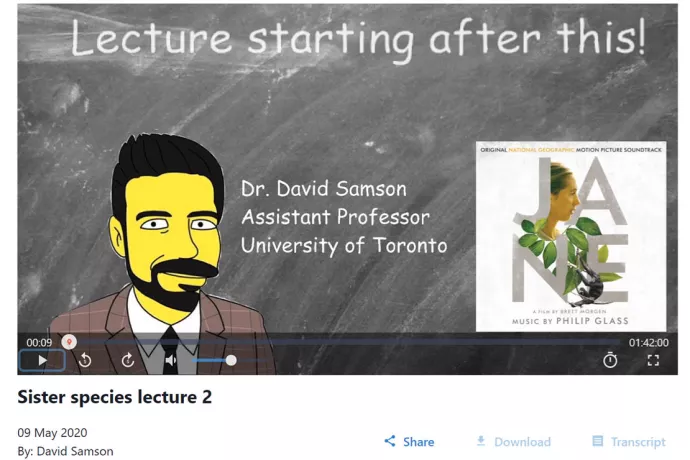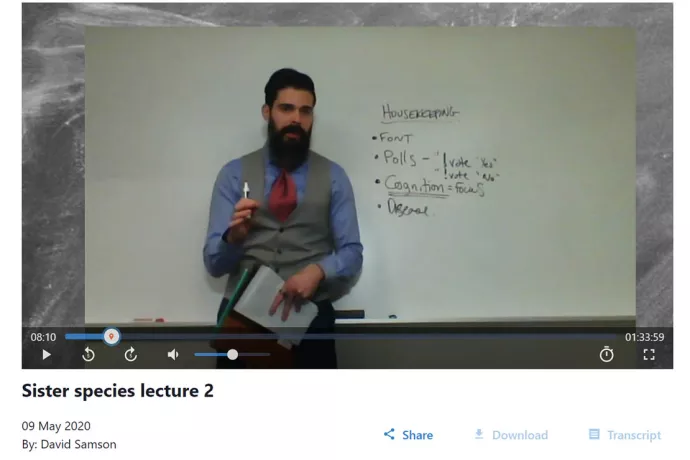
UTM professors find ways to engage with students online
Faced with the necessity of teaching summer sessions entirely online, U of T Mississauga professors found ways to keep lectures interesting and meaningfully engage with students in the digital realm.
Keeping communication channels open, seeking and implementing student feedback, and just keeping it real helped ensure course delivery was informative, interactive and full of energy, say both students and professors after experiencing remote learning firsthand.
“When you’re interested in the content, the lectures are engaging, irrespective of whether they’re taught online or in person,” says Vibhor Rohatgi, a first-year master’s student in sustainability management who took Barbara Murck’s online Natural Hazards course over the summer.
For Murck, a teaching stream professor in the Department of Geography, Geomatics and Environment, teaching remotely is nothing new. For about 15 years, she has been teaching ENV100Y5 Environment, a large first-year course, in a dual-delivery format during the academic year, and during the summer, the course is fully online in a condensed six-week format.

“There are two main things you have to do to be really successful with remote course delivery, in addition to your usual teaching skills,” says Murck. “You have to be real, so your students have the feeling that you are an actual person, talking to them, especially if the lecture is asynchronous, because you’re not meeting them in the hallways where they can chat with you informally.
“I consciously decided not to get too fussy about production values with my videos, as long as they’re good enough that they’re not annoying; otherwise, they seem too packaged.”
Murck also ensured she stayed connected with her class. She and her co-instructor held online office hours daily. She says students dropped in every day and, even if they didn’t drop in, they liked knowing their instructors were available.
“With fully online courses, I communicated obsessively with the students,” Murck says.
Nicole Chafe, another first-year master’s student who took Murck’s online Natural Hazards course, says that an online course required her to become more disciplined.
“I learned about personal motivation and realized that I had to push myself more,” she explains. “It takes determination to be sure to get the work done without the reinforcement of classes.
“My personal preference is still face-to-face classes, but (Murck) was very engaging and it was easy to pay attention to her online lectures.”

David Samson, an assistant professor of biological anthropology, says the key to teaching online is to live stream his lectures using the Twitch app, often used by gamers. Samson is new to remote course delivery, teaching his first full remote course, Sister Species, this summer.
“One thing I feel makes my classes engaging is my energy and I was afraid I’d lose that online,” he says. “I know how critical body language is, and with a lot of remote options, the students couldn’t see me gesturing.”
Samson found live streaming “much more enjoyable than reading from a PowerPoint and recording myself. It was like having my own little production studio.”
Although he could feel the difference between his in-person lectures and his onscreen performances, “I think the students got what they needed; they were about as engaged as they could be,” Samson said. “The grades were approximately the same as for a live class, so the evidence was there.”
He held a question and answer session at the end of each class and asked for student feedback about the format. As a result, he was able to tweak things, such as adjusting the font for the chat boxes to make it more readable.
“I see opportunity in remote delivery,” Samson said. “Distance usually prevents students at the other U of T campuses from enrolling in my courses, so why not improve access for the wider student body? Nothing can beat in-person delivery, but it’s a nice way to increase access.”

